 |
Including Children and Youth with Disruptive Behaviors |
2.00 |
When working with children and youth, we encounter a wide range of behaviors. Effective behavior guidance strategies can help reduce the amount of time and energy spent addressing disruptive behaviors in the program. During this course, participants will explore the challenges of children and youth with disruptive behavior and learn strategies for effectively addressing these behaviors. |
 |
Advanced Interpersonal Communication: Supervisors |
0.75 |
When you think of a supervisor, you probably think of your immediate boss. However, in the workplace, most people have several supervisors. Your workplace might be divided into teams, departments or divisions. Within each level, there is a supervisor to whom you are accountable, even if you do not deal with that person on a day-to-day basis. Company executives and board members can also be considered supervisors because they might have the power to make decisions regarding your employment, salary, promotions, and work assignments. It is important to communicate effectively with all of your supervisors to maintain an efficient workplace and to be able to promote your own ideas for improvements.
In this course you will learn to: identify the types of ineffective supervisors and ways to interact with them, and negotiate a raise with a supervisor and offer an effective resignation. |
 |
Advanced Interpersonal Communication: Supervisors (Instructor Guide) |
0.75 |
When you think of a supervisor, you probably think of your immediate boss. However, in the workplace, most people have several supervisors. Your workplace might be divided into teams, departments or divisions. Within each level, there is a supervisor to whom you are accountable, even if you do not deal with that person on a day-to-day basis. Company executives and board members can also be considered supervisors because they might have the power to make decisions regarding your employment, salary, promotions, and work assignments. It is important to communicate effectively with all of your supervisors to maintain an efficient workplace and to be able to promote your own ideas for improvements.
In this course you will learn to: identify the types of ineffective supervisors and ways to interact with them, and negotiate a raise with a supervisor and offer an effective resignation.
This Instructor's Edition of this course includes notes and suggestions to assist you in presenting the material, whether in an in-person classroom setting or as an instructor-led online or distance-learning course. It also provides you with the answers to questions found in mid-lesson activities, as well as in the quiz that concludes the course. |
 |
Bony Fishes Collection |
10.00 |
Whether they are cruising the vast open sea, blending in with the bottom, lurking in the kelp beds, hiding in the coral, or fighting their way upstream, fish live in a world that’s vastly different than ours. In the Bony Fishes Collection, we’ll dive into this world. You’ll explore:
• Bony Fishes Module 1: Physical Characteristics
• Bony Fishes Module 2: Distribution and Habitat
• Bony Fishes Module 3: Ecology and Behavior
• Bony Fishes Module 4: Reproduction and Development
• Bony Fishes Module 5: Conservation.
|
 |
Job Search and Networking |
1.50 |
Whether you're looking for your very first job, a different position in your field, or planning to switch to a new career, searching for a job can be a big challenge. While there's no easy way to find a job, the right combination of job search strategies can make the process more manageable.
In this course, you will learn different techniques to assist you in searching for a job. This will include utilizing technology and developing both your personal brand and your professional network. |
 |
Managerial Leadership: Coping Through a Change Process |
1.00 |
Whether your employees perceive change as positive or negative, you might encounter an emotional response from them. They will have many questions regarding their roles, competencies, and, possibly, even their futures. Your employees might feel they are being forced out of a comfort zone, and they might experience a loss of familiarity. Typical responses during a change include feelings of doubt, anxiety, fear, and anger. Sometimes, changes in the workplace can trigger a severe emotional response.
In this course you will learn to: respond to distress and reduce stress, and succeed through failure and deal with mistakes. |
 |
Managerial Leadership: Coping Through a Change Process (Instructor Guide) |
1.00 |
Whether your employees perceive change as positive or negative, you might encounter an emotional response from them. They will have many questions regarding their roles, competencies, and, possibly, even their futures. Your employees might feel they are being forced out of a comfort zone, and they might experience a loss of familiarity. Typical responses during a change include feelings of doubt, anxiety, fear, and anger. Sometimes, changes in the workplace can trigger a severe emotional response.
In this course you will learn to: respond to distress and reduce stress, and succeed through failure and deal with mistakes.
This Instructor's Edition of this course includes notes and suggestions to assist you in presenting the material, whether in an in-person classroom setting or as an instructor-led online or distance-learning course. It also provides you with the answers to questions found in mid-lesson activities, as well as in the quiz that concludes the course. |
 |
Building a Broader Base for Zoo-Based Conservation: Engaging Non-Traditional Conservationists |
1.00 |
While it is often thought of as an activity and ideology dominated by tree-huggers, conservation should have a much wider base of participation than is often the case. Hunters, fishers, veterans, and people across the political spectrum comprise an under-developed source of support for conservation projects. In this webinar, we will focus on outreach and messaging approaches that address this opportunity for zoos, as well as the larger conservation community. |
 |
Wildlife Ambassador Management |
2.00 |
Wildlife Ambassador Management will review the range of program animal roles in zoos and aquariums, the risks and rewards, the challenges and the considerations necessary for a program that follows best practices. The class will focus on animal acquisitions, animal handling policy, management practices for meeting the program animal’s social, physical, behavioral and nutritional needs as well as the safety of the animals, guests, and staff. |
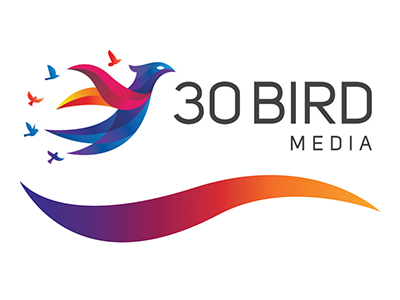 |
ITIL® 4 Foundation |
24.00 |
With more than 1,500,000 certified professionals worldwide, ITIL (IT Infrastructure Library) is the most widely established approach to IT Service Management. It provides a set of best practices for identifying, planning, delivering and supporting IT services to businesses and can be applied to nearly all organizations. ITIL 4 is fully compatible with ISO/IEC 20000, the first international service management standard for organizational certification and compliance.
The 30 Bird ITIL 4 Foundation course provides IT leaders, management, and support staff with a comprehensive introduction to the core concepts of ITIL 4. It is designed to equip students with a practical understanding of ITIL 4 key concepts, principles, and practices that enable modern IT-enabled services in today’s digital economy.
This course is based on the latest ITIL 4 best-practice guidance and will prepare the attendee for the ITIL 4 Foundation exam normally given at its conclusion. Candidates who wish to acquire knowledge in the theory and practices of the ITIL 4 management framework. This knowledge is also required if the candidate wishes to pursue any of the ITIL 4 certification schemes.
There are no specific prerequisites for this course. However, some basic knowledge of management theory can be helpful. After completing this course, you will know:
- What ITIL is; how it fits into the service management framework; how it has evolved over the years; and about the ITIL service value system
- The key concepts of ITIL service management, and how ITIL guiding principles can help an organization to adopt and adapt ITIL service management
- The four dimensions of ITIL service management
- The purpose and components of the ITIL service value system, the ITIL guiding principles, and governance
- The activities of the service value chain, and how they interconnect, and the key concepts of continual improvement
- The various ITIL practices and how they connect to value chain activities
NEW: Release 2.0 includes Sample Exam Papers in the book. Previously available only via download, the sample exams address all the topics covered in our ITIL 4 Foundation course. The questions are worded exactly as they appear in the official ITIL 4 Foundation exams. The Sample Exam Rationales (available via download) provide all the answers to the exam questions, as well as the rationales behind the correct answers. The sample exam questions, answers, and rationales are designed to best prepare you for taking the actual ITIL 4 Foundation exam once you've completed the course. |
 |
Creating an Inclusive Program |
2.00 |
With planning, training, and support, program staff can successfully include many children with special needs. Program staff must develop the skills necessary to assess the environment, materials, equipment, and activities to make the necessary modifications and accommodations so that all children and youth in their programs are successful. During this course, participants will discuss the law regarding inclusion as well as the attitude and reasonable accommodations needed to create an inclusive environment for children and youth with special needs. |
 |
Cybersecurity Fundamentals |
1.00 |
With the increasing use of technology in all facets of life, the internet has quickly become a necessity in doing business, getting an education, providing medical care, and operating on a daily basis. The internet is essential to most industries and sectors that you could work in. This importance and usage also bring along the negatives of the internet. Cyber attackers can steal information from people who are not careful nowadays and you need to be able to protect yourself.
This course provides information on the internet and how to mitigate the risks of operating online to avoid putting yourself in danger. In addition, you will also learn about how to protect your data and respond effectively to any sort of cybersecurity incident. |
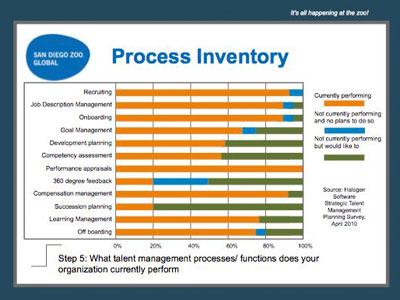 |
Mapping Your Performance and Talent Strategy for Results |
0.50 |
Without a "HR strategic talent management plan" tied to organizational goals, HR teams struggle to play a strategic role in their organization and talent management activities. Make the most of your only true sustainable competitive differentiator – your workforce. Learn to:
- Identify organizational goals/priorities. Define HR goals/priorities.
- Identify organizational drivers and challenges
- Identify gaps
- Articulate talent management processes/functions your organization currently performs
- Measure results. Communicate successes/contributions.
|
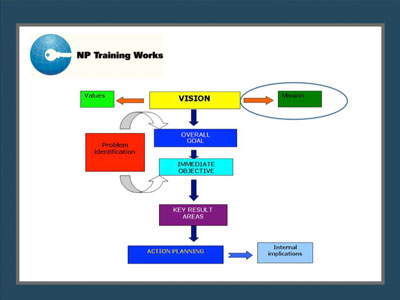 |
Creating and Implementing an Effective Strategic Plan for Your Organization |
1.00 |
Without strategic direction it is hard to get where you want the organization to go. This Webinar offers you a process for reaching your organizational goals. Strategic plans help your organization, or department, set the roadmap to make a significant mission impact. Through this Webinar you will learn a model for completing a Strategic Planning process in your organization. It covers the entire process from planning to defining the strategic framework and then creating a process for implementation activities. You will learn how to create a strategic framework that gives the activities coherence and direction, ensuring that your strategic plan becomes a living, breathing document that is fully utilized in the organization. You will also learn how to involve your board, staff, and other important constituencies in the process to increase your chances of successful implementation. In addition, you will receive leave-behinds that give you practical exercises and instructions to use during your strategic planning process. |
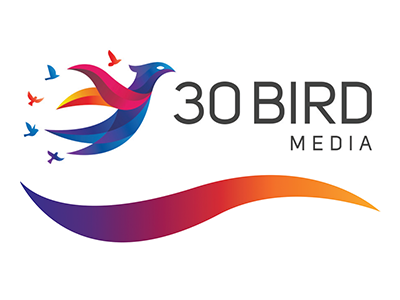 |
Microsoft Word 2019 Complete |
24.00 |
Word 2019 Complete provides the basic concepts and skills to be productive with Microsoft Word 2019, starting with fundamentals and working up to advanced tools and techniques. This course maps to the objectives of the Microsoft Office Specialist and Expert exams for Word 2019. Objective coverage is marked throughout the course, and you can download an objectives map from 30bird.com.
Students will benefit most from this course if they want to accomplish basic tasks in Word and then build on fundamental skills to become a power user. The course also provides a solid foundation in Word's advanced features before continuing on to more complex document management or VBA programming topics.
The course assumes that students know how to use a computer, and that they are familiar with Microsoft Windows. It does not assume that they’ve used a different version of Word or another word processing program. |
 |
Electricity |
1.00 |
Working with electricity can be dangerous. This course covers electrical safety while on the job. You will learn about the types of electrical-related injuries that can occur, and how to prevent them. |
 |
Managing Chronic Lower Back Pain in Older Adults |
0.50 |
You are here to gain a basic understanding of chiropractic management in older adults. There is a need for society to change its focus in the management of chronic pain syndromes from a “pain management” perspective to a “functional management” perspective. It’s important to recognize that pain and function do not necessarily equal each other. |
 |
Simple Statistical Analysis: Non-parametric |
1.00 |
You have collected behavioral data, now how do you decide which statistics to use to test your hypotheses? Learn about spreadsheets that will aid you in calculating the simple non-parametric tests suitable for most behavioral data. The first step is to plot your data and stare at it. A research team will demonstrate how to analyze bar graphs (contingencies), scattergrams (correlations) and box/whisker plots (means). |
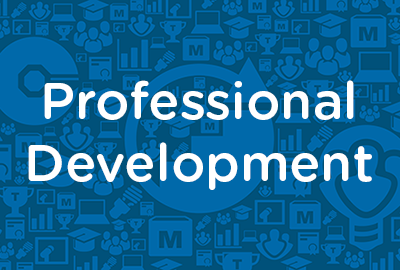 |
Cross-Cultural Business Communication: Cross-Cultural Business Situations (Instructor Guide) |
1.00 |
You might be asked to attend or take part in cross-cultural meetings. Although cross-cultural meetings are common when you travel to a foreign country, they can also take place when several cultures send their representatives to attend meetings. These meetings might also take place over the telephone, online, or in a video conference.
In this course you will learn to: attend and organize cross-cultural meetings, conduct negotiations, and solve problems during a cross-cultural meeting.
This Instructor's Edition of this course includes notes and suggestions to assist you in presenting the material, whether in an in-person classroom setting, or as an instructor-led online or distance-learning course. It also provides you with the answers to questions found in mid-lesson activities, as well as in the quiz that concludes the course. |
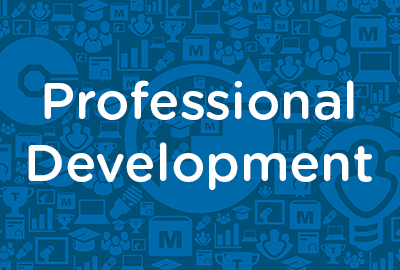 |
Cross-Cultural Business Communication: Cross-Cultural Business Situations |
1.00 |
You might be asked to attend or take part in cross-cultural meetings. Although cross-cultural meetings are common when you travel to a foreign country, they can also take place when several cultures send their representatives to attend meetings. These meetings might also take place over the telephone, online, or in a video conference.
In this course you will learn to: attend and organize cross-cultural meetings, conduct negotiations, and solve problems during a cross-cultural meeting. |
 |
Business Problem Solving: Problem-Solving Process (Instructor Guide) |
1.67 |
You need highly developed problem-solving skills to manage employees and achieve organizational goals. Understanding the problem-solving process is the first step in solving problems effectively.
In this course you will learn to: identify the problem by analyzing the situation, gathering information, and identifying solution criteria, commit to a solution by generating, choosing, and implementing one, confirm that the problem has been eliminated by evaluating the solution.
This Instructor's Edition of this course includes notes and suggestions to assist you in presenting the material, whether in an in-person classroom setting or as an instructor-led online or distance-learning course. It also provides you with the answers to questions found in mid-lesson activities, as well as in the quiz that concludes the course. |
 |
Business Problem Solving: Problem-Solving Process |
1.67 |
You need highly developed problem-solving skills to manage employees and achieve organizational goals. Understanding the problem-solving process is the first step in solving problems effectively.
In this course you will learn to: identify the problem by analyzing the situation, gathering information, and identifying solution criteria, commit to a solution by generating, choosing, and implementing one, confirm that the problem has been eliminated by evaluating the solution. |
 |
Managerial Leadership: Employing Motivational Strategies |
0.50 |
You need to use motivational strategies in your leadership to help your employees perform optimally, and to make them feel as though they are helping meet a need. When you motivate your employees to accomplish their goals, and give them the necessary feedback to optimize their performance, they feel they are helping meet the organization’s needs.
You, your employees, and your organization all benefit when you use motivation in leadership. You benefit because, through motivation, your work group will perform optimally. Your employees benefit because they experience job satisfaction and success in accomplishing their goals. Your organization benefits because its members are more committed to helping it be successful and grow.
In this course you will learn to: motivate employees and overcome employee apathy. |
 |
Managerial Leadership: Employing Motivational Strategies (Instructor Guide) |
0.50 |
You need to use motivational strategies in your leadership to help your employees perform optimally, and to make them feel as though they are helping meet a need. When you motivate your employees to accomplish their goals, and give them the necessary feedback to optimize their performance, they feel they are helping meet the organization’s needs.
You, your employees, and your organization all benefit when you use motivation in leadership. You benefit because, through motivation, your work group will perform optimally. Your employees benefit because they experience job satisfaction and success in accomplishing their goals. Your organization benefits because its members are more committed to helping it be successful and grow.
In this course you will learn to: motivate employees and overcome employee apathy.
This Instructor's Edition of this course includes notes and suggestions to assist you in presenting the material, whether in an in-person classroom setting or as an instructor-led online or distance-learning course. It also provides you with the answers to questions found in mid-lesson activities, as well as in the quiz that concludes the course. |
 |
Project Teams: Conducting Team Meetings (Instructor Guide) |
1.00 |
You should hold regular project team meetings in order to maximize the effectiveness of a project.
After the team has been assigned, you should schedule an introductory meeting, and set team goals. The purpose of an introductory meeting is to familiarize team members with each other, introduce the facilitator and recorder, and clarify questions that team members might have.
In this course you will learn to: identify the various roles in project team meetings and maximize the effectiveness of team meetings, understand the goal setting process in introductory meetings, and identify various issues that a team might face during team meetings.
This Instructor's Edition of this course includes notes and suggestions to assist you in presenting the material, whether in an in-person classroom setting, or as an instructor-led online or distance-learning course. It also provides you with the answers to questions found in mid-lesson activities, as well as in the quiz that concludes the course. |


























